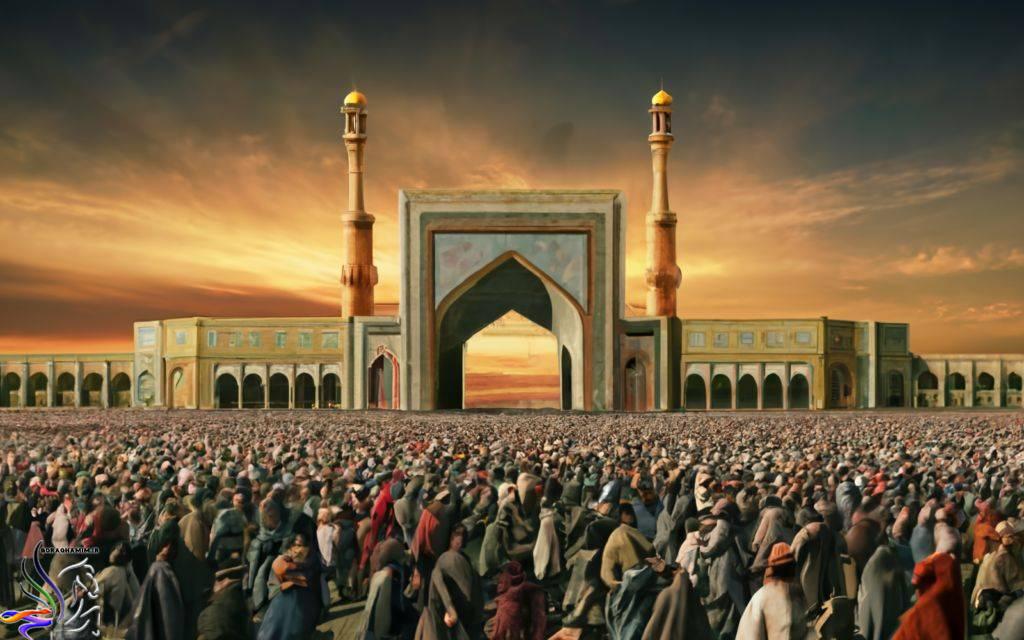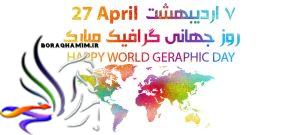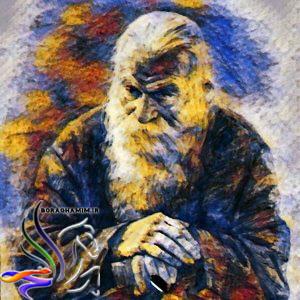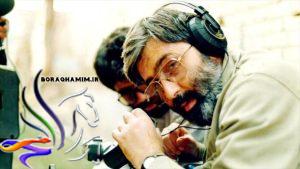Iran’s Islamic Revolution in 1357 brought profound changes in all dimensions of Iranian society, including in the field of art. These developments were reflected in the content and subject of artworks as well as in the style and approach of artists.
According to Buraq Hamim’s artistic news site , the Islamic Revolution of Iran in 1357 brought profound changes in all aspects of Iranian society, including in the field of art. These developments were reflected in the content and subject of artworks as well as in the style and approach of artists.
In terms of content:
Religious and revolutionary themes: After the revolution, we saw an increase in artists’ tendency towards religious and revolutionary themes. Works were created with themes such as sacrifice and martyrdom, struggle against oppression, and ideals of the Islamic Revolution.
Attention to Iranian identity : After the revolution, artists sought to return to their Iranian and Islamic identity. This was manifested in the use of Iranian elements and symbols in works of art, as well as attention to the traditional and indigenous art of Iran.
Reflecting social issues: After the revolution, artists also paid attention to social issues and society’s problems. Works were created with themes such as poverty, social inequality, and social harm.
In terms of style and approach:
Tendency to realism: In the early years after the revolution, the tendency to realism increased in Iranian art. Artists sought to reflect real events and issues of society in their works.
Use of symbols: The use of symbols in works of art became popular. Artists used symbols to express deeper concepts and themes.
Combination of traditional and modern art: In some of their works, artists combined traditional Iranian art with modern art. This led to the creation of new and original works.
In addition, the Iranian Islamic Revolution created new institutions and centers to support art and artists. Among these institutions, we can mention the **Ministry of Culture and Islamic Guidance**, the art field, and the cultural and artistic centers of mosques.
In general, it can be said that the Iranian Islamic Revolution had a profound impact on Iranian art. These changes were manifested in the content and theme of the artworks as well as in the style and approach of the artists.
Some clear examples of the effects of the Iranian Islamic Revolution on Iranian art:
- In the field of music : revolutionary songs, religious music, and epic music
- In the field of theater : religious plays, revolutionary plays, and social plays
- In the field of cinema : revolutionary films, religious films, and social films
- In the field of painting: religious paintings, revolutionary paintings, and paintings with social themes
Prominent artists who created lasting works of art after the Iranian Islamic Revolution:
Mohammadreza Shajarian (singer)
Seyyed Mohammad Hosseini (poet)
Ebrahim Hatamikia (cinema director)
Abbas Katouzian (painter)
Kamal Tabrizi (film director)
The effects of Iran’s Islamic Revolution on Iranian art is a vast and complex subject that needs further investigation and analysis.
The reporter of Boraq Hamimim art news site added that the Islamic revolution of Iran in 1357 brought profound changes in the field of Iranian art. These developments resulted in the emergence of many committed and creative artists who promoted the values of the revolution and Iranian-Islamic identity with their magnificent works. In the following, a number of prominent artists after the Islamic Revolution of Iran are mentioned in various fields:
Music :
Mohammadreza Shajarian: the famous singer of Iranian music who became one of the most popular artistic figures after the revolution with his enduring songs, especially in the field of religious and epic music.
Homayoun Shajarian: a prominent singer of Iranian music who, by combining traditional and modern music, created new and innovative works in the field of Iranian music.
Alireza Eftekhari: famous singer of Iranian music who sang many revolutionary and religious hymns and ballads with his pleasant voice.
Mohammad Esfahani: a popular singer of Iranian music who became one of the well-known figures of Iranian pop music after the revolution with his famous songs.
Theater:
Dariush Maudebian: a prominent theater director and playwright who criticized the social and political issues of Iranian society with his bold and committed plays.
Bahram Bayzaei: a well-known theater director and playwright who promoted Iranian culture and literature with his magnificent works.
Qutbuddin Sadeghi: a veteran theater director and playwright who became one of the well-known figures of Iranian theater with his works in various fields, including religious and children’s theater.
Leonardo Theater: a famous theater group that became one of the most popular theater groups in Iran after the revolution with its humorous and social shows.
the cinema :
Majid Majidi: An outstanding film director who became one of the well-known faces of Iranian cinema in the world with his acclaimed films, especially in the field of children and teenagers.
Ebrahim Hatamikia: a famous cinema director who promoted the values of the revolution and the epic creations of Iranian warriors with his revolutionary films and sacred defense.
Kamal Tabrizi: a dedicated cinema director who criticized the problems of Iranian society with his social and political films.
Rasool Malaqlipour: a famous cinema director who depicted the bravery and sacrifices of Iranian warriors during the imposed war with his holy defense films.
Painting:
Mahmoud Farshchian: An outstanding Iranian painter who became one of the well-known figures of Iranian painting in the world with his religious and epic paintings.
Ali Akbar Sadeghi: a famous Iranian painter who depicted the landscapes and nature of Iran with his watercolor paintings.
Hossein Mahjoubi: a pioneer Iranian painter who promoted Iranian culture and literature with his coffee house paintings.
Abbas Katoozian: committed Iranian hyperrealist painter who promoted the values of Iran’s Islamic Revolution with his unique paintings.
Hassan Roohul-Amin: a dedicated Iranian painter who promoted the values of the Iranian Islamic Revolution with his realistic paintings and depictions of Shia imams.
These people were just some of the prominent artists after the Islamic Revolution of Iran. Many artists in different fields of art promoted the values of the revolution and Iranian-Islamic identity with their magnificent works and recorded their names in the history of Iranian art.
tip:
This list only includes some prominent artists after the Islamic Revolution of Iran and is by no means comprehensive and complete.
Many artists in various artistic fields promoted the values of the revolution and Iranian-Islamic identity with their magnificent works, which are not all mentioned in this list.






More Stories
From “Sari Glin” to Azerbaijani folklores
Merry Christmas
Hazrat Fatima Zahra, peace be upon her